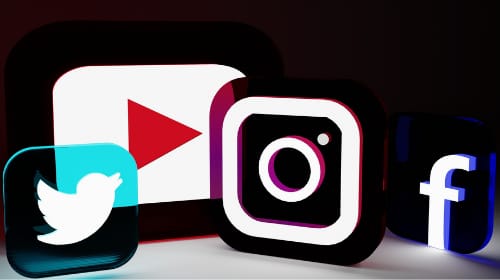Consumers crave connection. They crave community. And authenticity. The era of one-way communication via a single channel is over. Hefty ad spends and silver bullet campaigns won’t cut it. It’s time to end marketing isolation.
As marketers, it’s our job to deliver an experience that matches demand – or better yet, anticipates where demand will shift. And, in 2022, we’ll see the end of isolation mark this shift.
What exactly do we mean by this?
Consider Rex Briggs’ analysis of a Ford Fiesta ad back in the ‘90s. He discovered that “surround sound marketing” — the introduction of a consistent key theme or message across multiple channels — increased brand lift, perception, and pull through.
Today’s landscape is no different. Except now, we have more connection points available to us, as marketers. More budget, more channels, more devices.
And yet, we’re seeing brands look at services and campaigns in silos, rather than in concert.
It’s time to say goodbye to marketing isolation and hello to outsmarting the competition through integration.
Here are some predictions on how this all will play out in 2022.
Marketers will outsmart, not outspend
We saw it when Proctor & Gamble cut ad spend in 2018 – spending to spend doesn’t cut it.
Rex Petrill, VP of Paid Media at TEAM LEWIS, predicts,
“Companies who spend more won’t win more. We know that more than 56% of ad impressions are never seen by consumers. Challenger brands should take solace in this — 2022 could be their year, if they activate smart, agile campaigns.”
Consumers are becoming more brand loyal. They’re developing an affinity for brands that stand for something and share similar values to their own. People need to be wooed for a meaningful and impactful interaction to take place.
Successful marketers in 2022 must tear down walls and work across an integrated setting to achieve the best outcomes. This becomes even more pertinent with new privacy regulations. According to Gerard LaFond, SVP at TEAM LEWIS, “Big tech won’t try to comply with regulations. They’ll outsmart them.”
The bottom line: the right audiences will not be bought.
Creative expressions will live in concert, not solo
Consider Peloton’s recent 48-hour turnaround on an ad in response to “And Just Like That…” — no spoilers here, watch it for yourself. We’re just here to applaud the speed at which the brand spotted the trend and delivered. What’s more, the end result didn’t just appear in social feeds. It exploded — across earned, owned, shared and paid channels.
While not necessarily considered a challenger brand, this is a prime example of how leaders can be overturned. Challengers have the opportunity to invest in omnichannel creative expressions. Agility is key of course, but budget is not. (Read on for more about that prediction…)
Creating a completely 360-degree campaign — incorporating all channels and touchpoints across the consumer journey—ensures a uniform message and experience.
LaFond continues:
“Marketers are scrambling to address business impacts driven by changes in consumer privacy. The focus on solving a technology issue is only a symptom of bad creatives, bad storytelling and a growing audience disconnect.”
In other words, deliver a connected experience and avoid being snuffed out.
To achieve this, marketers, communications professionals, creatives, sales — these functions must all work in concert. Nicole Allen, VP of Digital at TEAM LEWIS goes so far as to say that “marketing leaders who continue working in siloes will be out of a job by 2023.”
Campaigns will foster connection, not division
The successful marketer of 2022 is both a generalist and specialist. They can scale their deep sector skillsets to complement and strengthen other disciplines and departments. They will roll up their sleeves to dive into any part of a brief, working across teams to deliver a truly connected experience.
Low code, authentic creative will replace high budget blockbuster investments. We’ve seen this with the growth of UGC and platforms such as TikTok. And, who could forget the Ocean Spray moment of 2020?!
Blockbuster moments don’t equate to community connection. Brands that act quickly to of-the-moment trends and conversations with a relatable creative response will win in the end.
And, it doesn’t take millions of dollars for an agile approach to reach the right audiences.
All of these predictions have a common theme: integration. You don’t have to outspend the competition, to outsmart it. You do have to consider all channels. You do need to work in concert across functions and teams.
To see how we are helping clients outsmart and integrate, visit teamlewis.com/outsmart.



